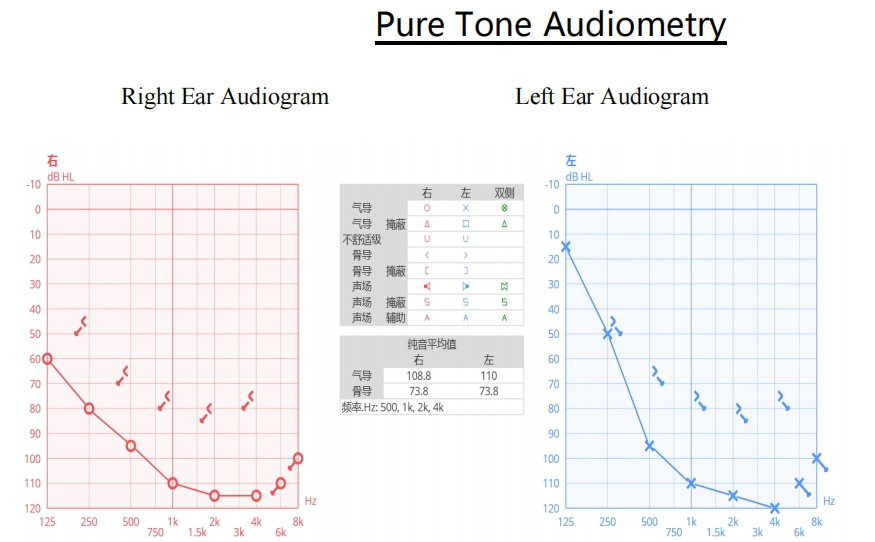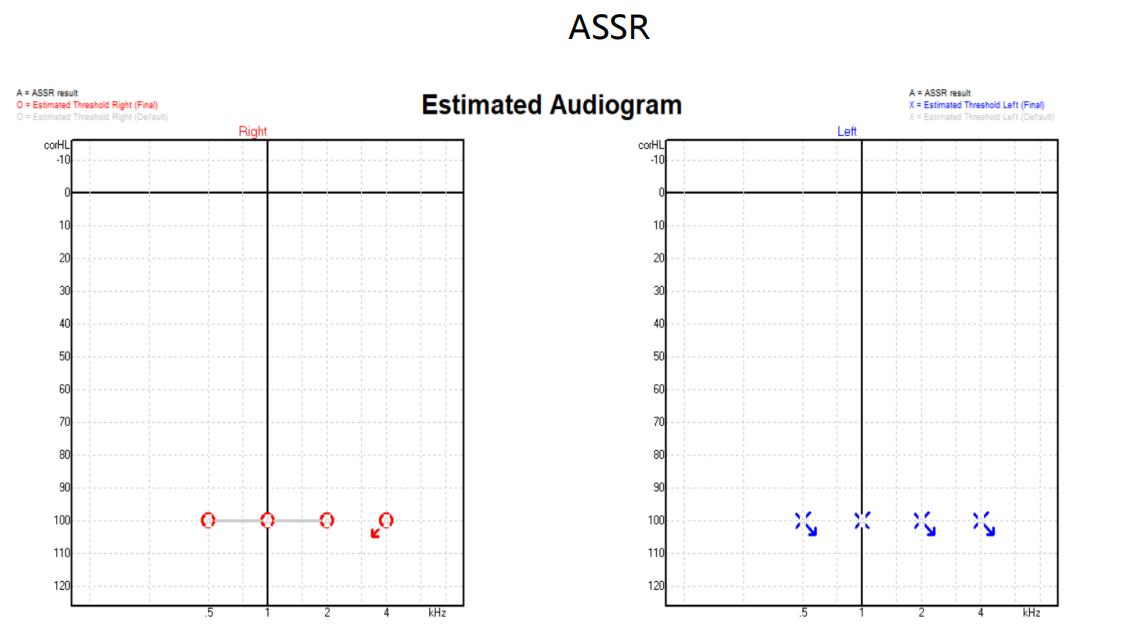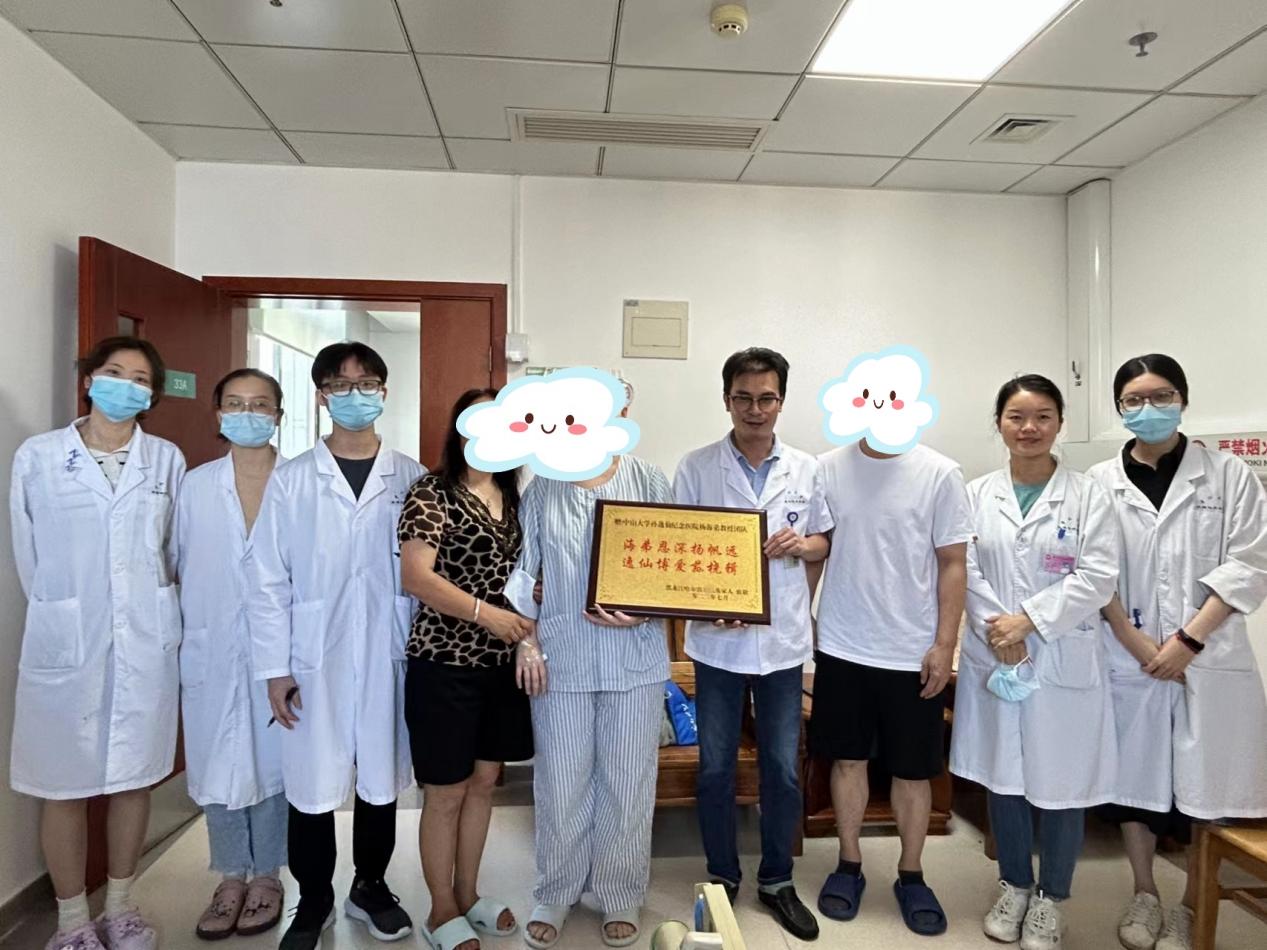"We've come a long way and this is our final straw." In July, in the hope of regaining her long-lost hearing, Liu and her family went on a trip of over 3,000 km from Harbin, the capital city of China's northernmost Heilongjiang province, to visit Prof. Yang Haidi at the Sun Yat-sen Memorial Hospital in Guangzhou.
The 25-year-old girl, whose hearing loss started at age six, suffered from congenital cochlear malformation. At first, it had not caught her family's attention, for it had little influence on her daily communication and language development. Until two years ago, Liu’s impaired hearing was exacerbated, accompanied by persistent ringing in the ears, making it hard to conduct conversations.
After many fruitless visits to hospitals in different cities, Liu and her family heard that Yang, Deputy Director of the Department of Otorhinolaryngology at the hospital, had achieved success in cochlear implant surgery. So, they decided to turn to Yang.
A preliminary pure tone audiometry showed that the average pure-tone threshold of Liu's ears reached above 100 dB HL, which means she couldn’t utilize any sound information from the outside world.

Liu's audiogram. (Photo provided to GDToday)

The auditory steady-state response (ASSR) hearing test indicates that Liu has profound hearing loss. (Photo provided to GDToday)
After a series of examinations that showed Liu was suitable for the surgery, Yang conducted multi-channel cochlear implants in both of Liu’s ears under the microscope.
The surgery went smoothly; Liu had no side effects such as headaches or fever, and the cochlear implants were in the correct position. It would take some time for Liu to recover, after which the devices can be activated.

A group photo of Prof. Yang's team, Liu, and her family. (Photo provided to GDToday)
The difference between hearing aids and cochlear implants
Both devices can improve the hearing of people with sensorineural hearing loss, a permanent auditory impairment.
Hearing-aids. The traditional air-conduction hearing aids mainly apply to people with less severe hearing loss—or the average pure-tone threshold is within 80 dB HL—mainly affecting their talking with others in different environments. Using hearing aids can significantly enhance their communication and reduce mental and social stress caused by hearing problems, as well as improve their hearing.
The hearing aids are designed for patients according to their different situations and require an accurate audiological diagnosis. Patients also need to learn how to use and maintain the devices and related accessories, and deal with simple malfunctions.
Cochlear implants. They are suitable for infants and young children with severe or profound sensorineural hearing loss in both ears or patients with post-lingual hearing loss at all ages.
Before the implantation, patients usually need to wear hearing aids for 3 to 6 months. If the devices have little effect, patients are suggested to have cochlear implant surgery when conditions allow and then perform hearing rehabilitation.
For adults with post-lingual hearing loss, whether they use traditional hearing aids or cochlear implants, obtaining ideal results hinges on not only professional help with rehabilitation but also patients’ active participation in the hearing training.
For people using the implants, the training is necessary yet more challenging compared with hearing aid users. After surgery, the brain receives coded electrical signals, so patients need to learn new sounds when they return to the hearing world.
Author | Teria Wang (intern), Hannah
Editor | Olivia, Steven, Will, Jerry
















